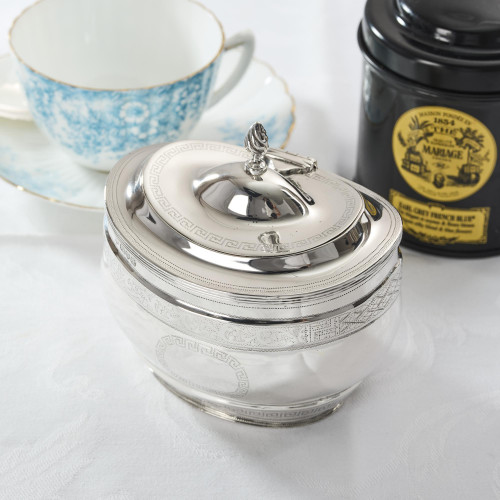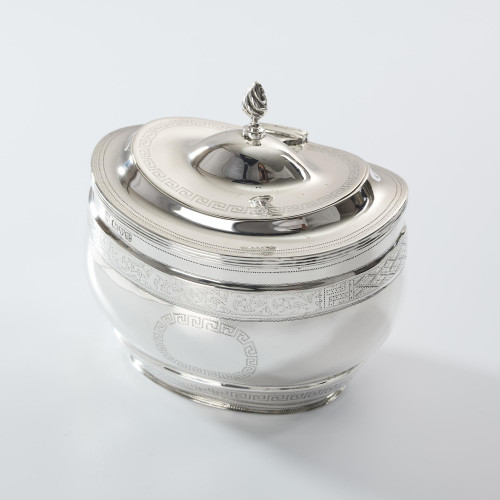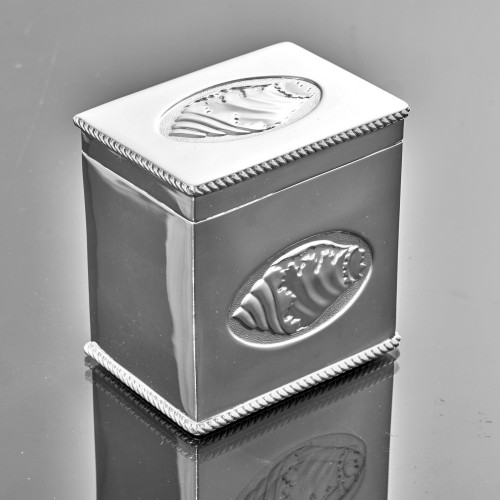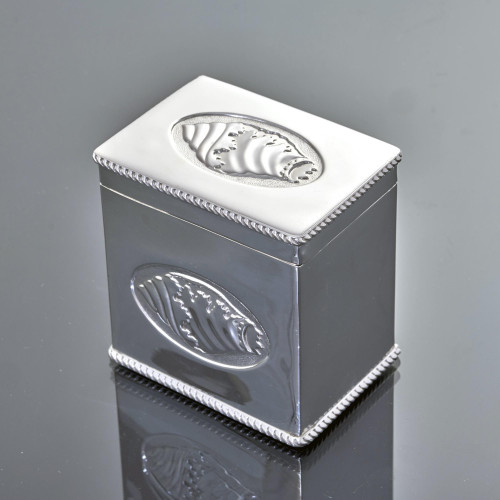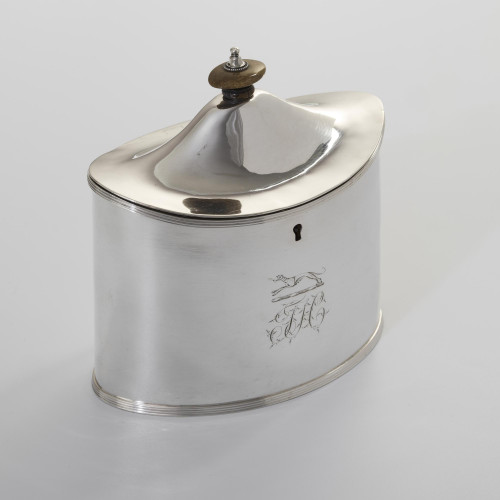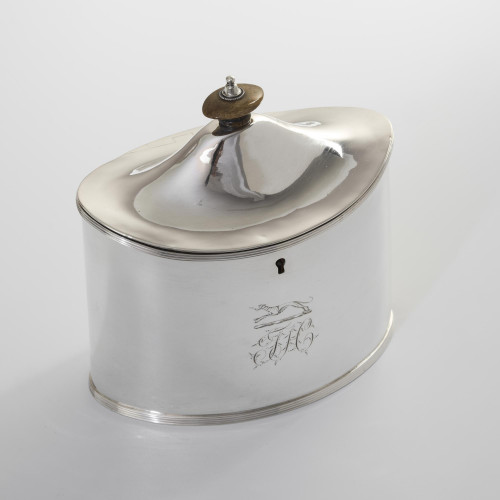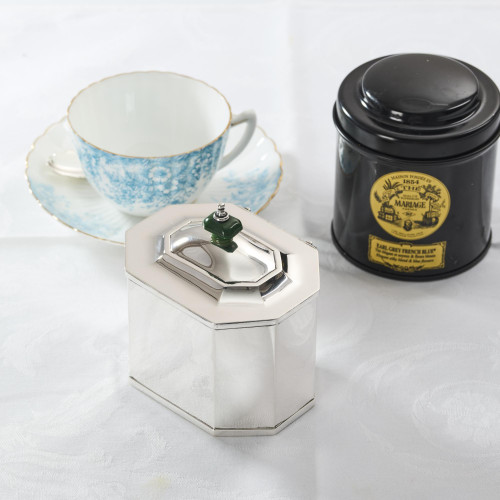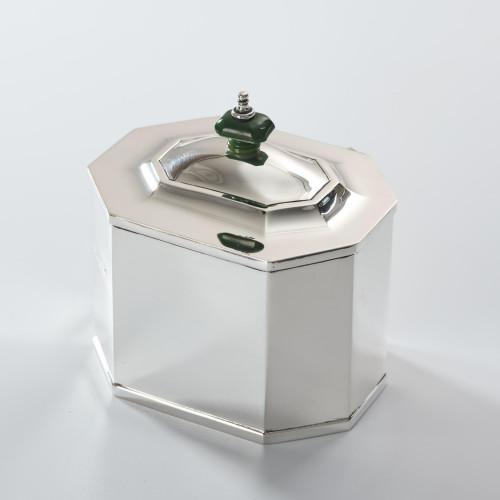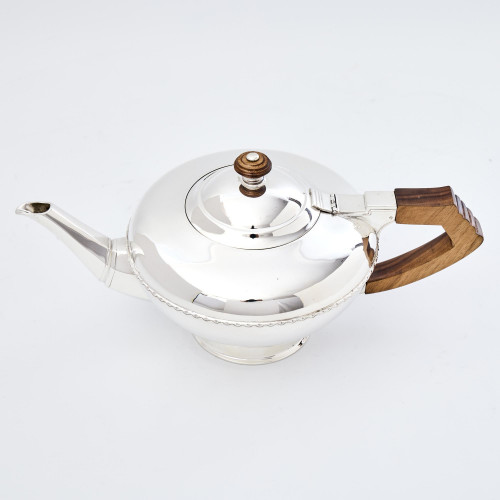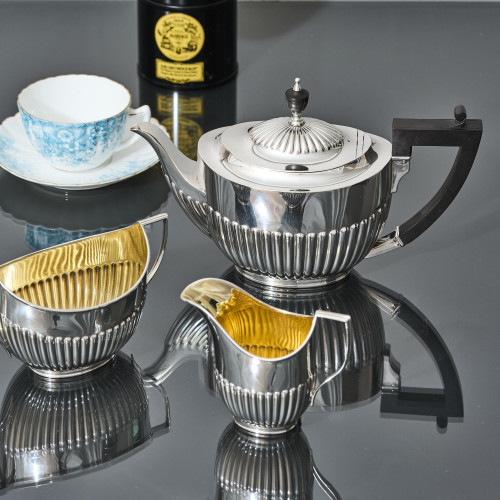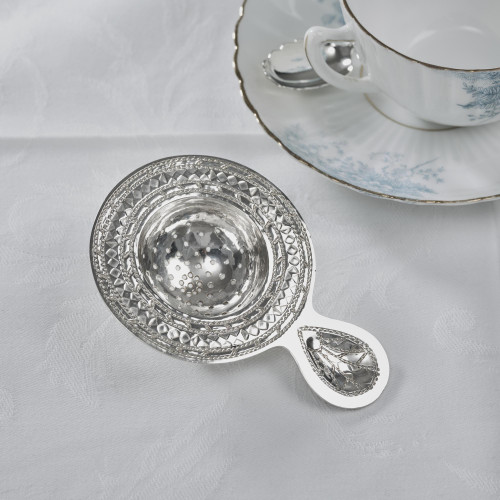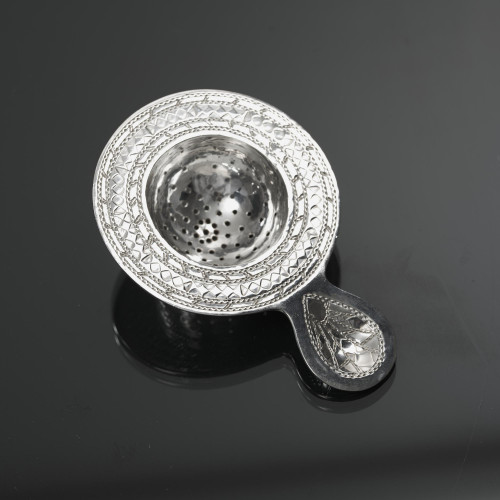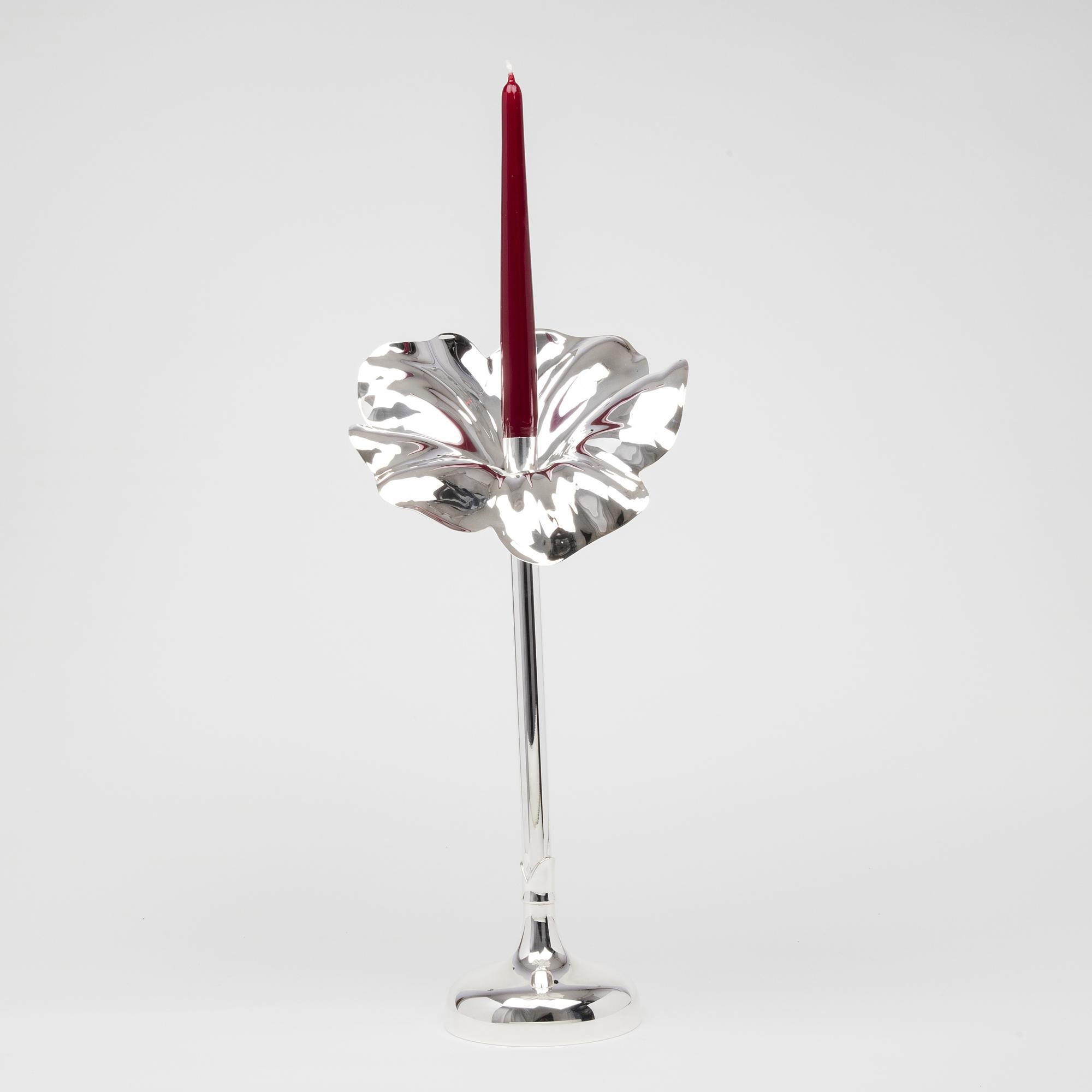- Home
- Tea & Coffee
- Tea caddies
- Antique Chinese silver tea caddy
Antique Chinese silver tea caddy
Antique Chinese silver tea caddy
A late 19th/early 20th century tea caddy made by the Canton-based artisan workshop LIAN XIANG SHENG 聨样盛 for the Canton and Hong Kong-based luxury goods retailer WANG HING 宏興
This particular style of tea caddy, based on a naturalistic interpretation of prunus mume tree trunk, takes its inspiration directly from Yixing unglazed stoneware (aka zisha) produced in Jiangsu Province. The Yixing potters began specialising in making teapots during the Ming dynasty as a direct result of the then new innovation of making tea from rolled leaves rather than the finely ground powdered tea that preceded it. In time, among Chinese tea connoisseurs, it was considered that a Yixing teapot made the perfect tea drink; a belief that carries through to the present day.
Appliqué high relief prunus motifs became popular on Yixing teapots in the early 18th century and it this that inspired Chinese silversmiths to produce equivalent wares in silver towards the latter part of the 19th century; the silversmith's use of the repoussé technique was ideal to mimic the appliqué clay motifs from the previous century. This style of silver teaware was never made for export per se, but was intended to create what was at the time a new tea-related status symbol for the significant burgeoning Chinese middle class and the foreign expat population of the treaty ports and in Hong Kong and Beijing.
As with their Yixing counterparts, the silver prunus pieces had a very particular shape that as Chinese tradition dictated also resembled Lingzhi 灵芝, the "fungus of immortality" that grows on tree trunks. In turn, these fungi resemble cloud shapes; stylised cloud motifs, "auspicious clouds" [xiangyun 祥云], represent the heavens and symbolise "good luck"; the Chinese word for "cloud" [yun 云] is homophonous with the word yun meaning "luck" or "fortune".
In addition, the applied high relief prunus motifs represent "renewal"; each of the five petals of the prunus blossoms [梅花 meihua] represent "five blessings" [梅開五福 meikai wufu] - "old age", "wealth", "health", "love of virtue" and a "peaceful death".
This silver caddy weighs 11 troy oz (346g).
Wang Hing was was the trading name chosen by the Lo family, an upper-middle-class wealthy merchant family who were specialists in trading jade, who established a retail silversmith business in Canton soon after 1852. The business evolved to become the best known and most prolific maker of export silver during the late China Trade period. Towards the end of the 19th century Wang Hing exhibited silver at international exhibitions and opened a flagship store in Hong Kong in around 1920.
Thank you to Adrien Von Ferscht (皇甫安) for sharing his knowledge. Adrien is considered the leading expert for Chinese export silver acting as an independent consultant and expert to museums, important private collections, academics and enthusiasts around the world.
Dimensions:
c1900
Shanghai
Excellent
Thank you for your enquiry.
We will get back to you soon.
Please create wishlist to add this item to
YOU MIGHT ALSO LIKE






